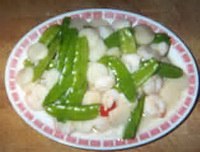
Xin'an School is distinguished in the field of traditional Chinese medicine. It developed a school of its own in the Song Dynasty, and flowered in the Ming and Qing Dynasties.
Between the Northern Song Dynasty and the end of the Qing Dynasty, more than 540 Xin'an doctors came forth, among which 225 wrote and edited more than 460 medical works. Some works were later introduced to Korea and Japan. Their works are rich in content and systematic theories, dealing with the departments of internal medicine, surgery, gynaecology, pedology, laryngology, ophthalmology, traumatology, ulceration studies, needle therapy, and naprapathy.
Xin'an school nurtured a lot of notable doctors in China, such as Zhang Kuo of the Northern Song Dynasty, Zhang Gao of the Southern Song Dynasty, Chen Ruqing and Wang Guorui of the Yuan Dynasty, Wang Ji and Xu Chunpu of the Ming Dynasty, Chen Zhengtong, Cheng Lin, Wang Ang, Wu Qian, Zheng Meijian, Wang Wenqi, and Cheng Xingxuan of the Qing Dynasty, among whom were Wang Ji and Wu Qian who were included as the four most eminent doctors of the Ming Dynasty and Qing Dynasty representatively. Xu Chunpu's work The Encyclopedia of Ancient and Modern Medicine and Chen Xingxuan's Medicine have even been included in the ten national distinguished medical works.








 PREVIOUS
PREVIOUS